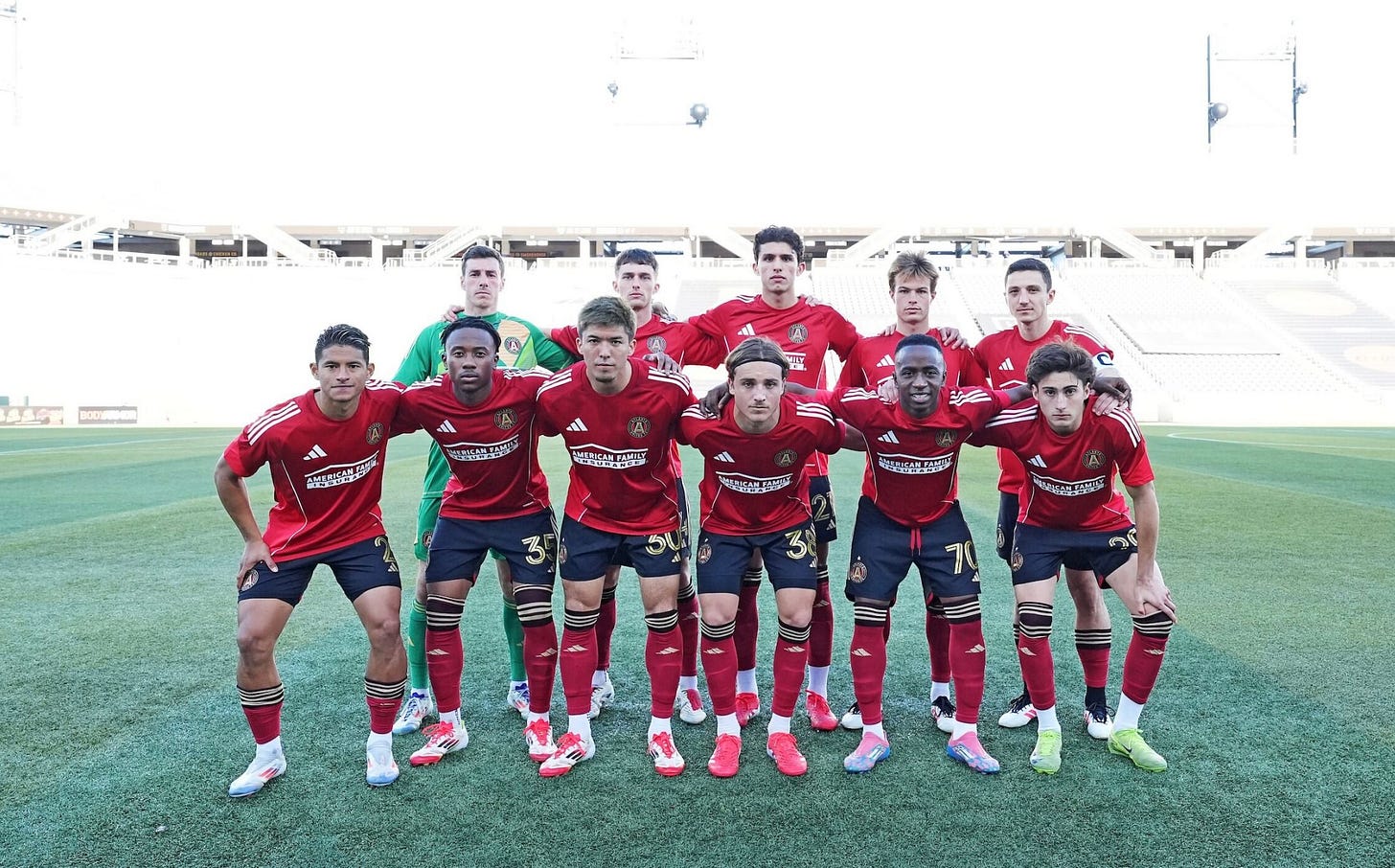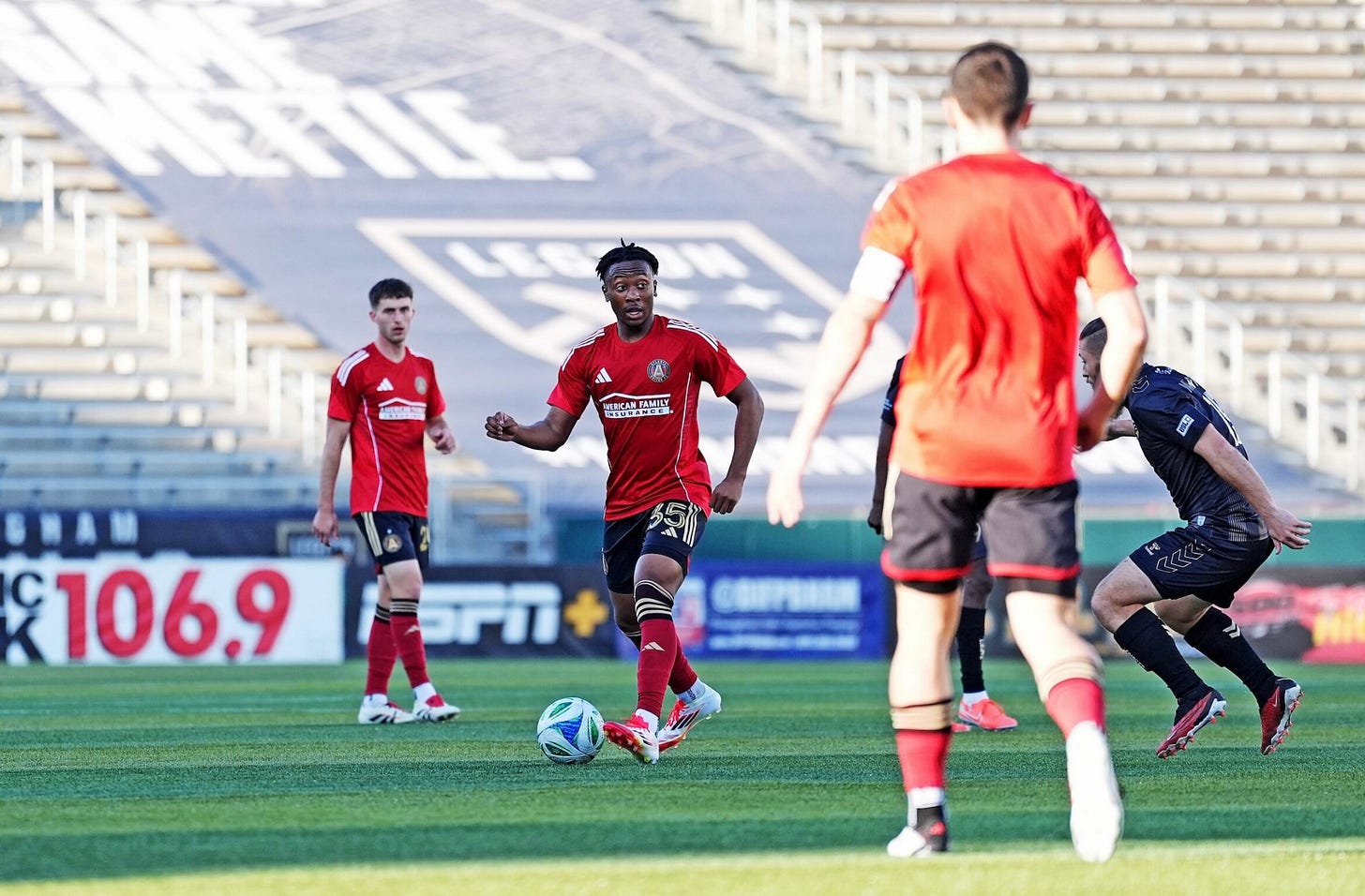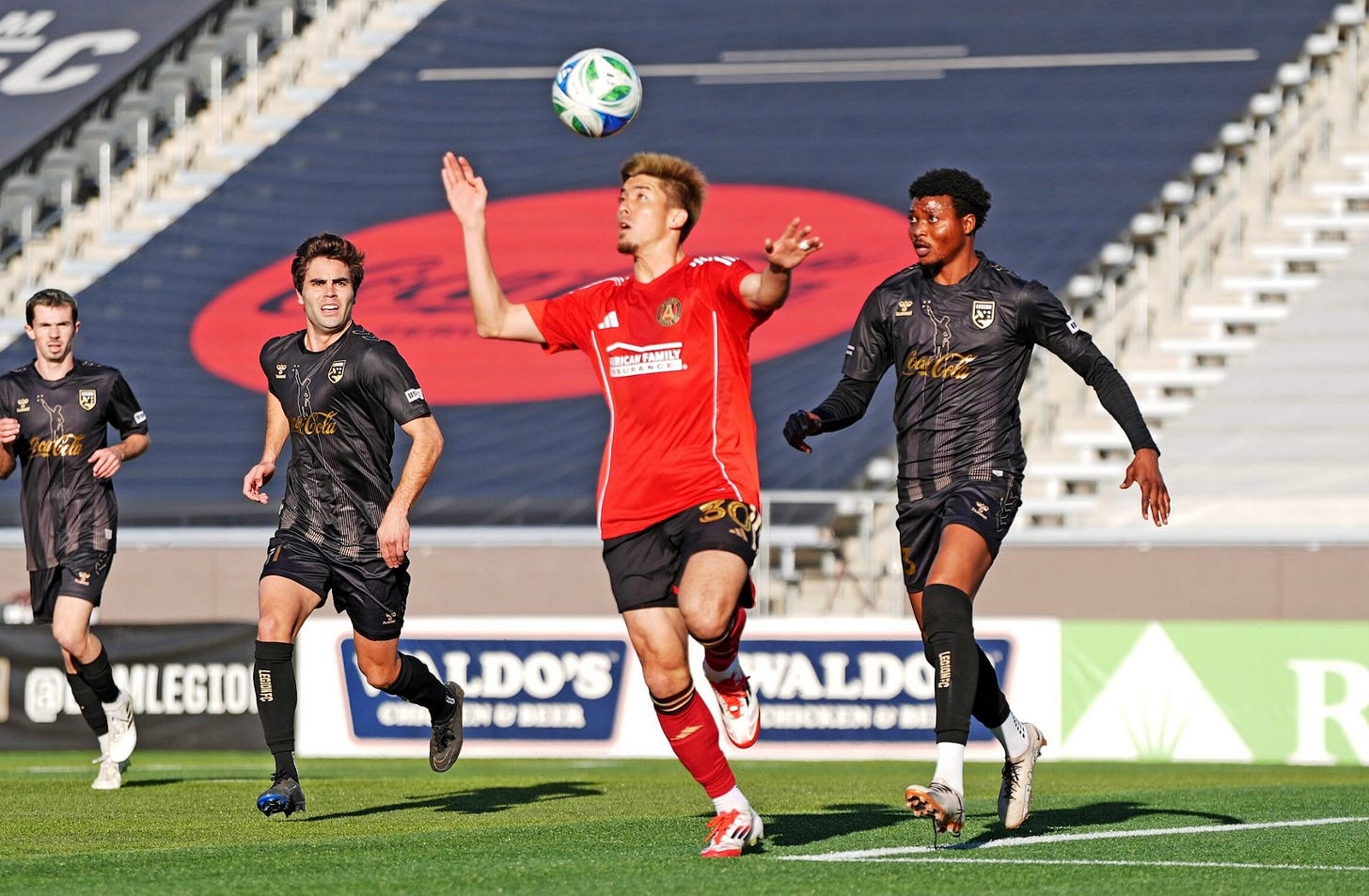Atlanta United started sloppy in their second preseason match of the year, but stayed disciplined tactically in what led to a comfortable 2-0 win over the Birmingham Legion. With this early showing of what Ronny Deila’s Atlanta United will look like going into the MLS regular season later this month, we decided to break down the style of play shown in the match defensively, building out of the back, and while in the attack.
Credit: Atlanta United
Defending:
United sets up in a 4-4-2 from an opponent’s goal kick. In the first half of the Legion match, Mosquera shifted from the left wing into the front two with Togashi, while in the second half, Miranchuk moved up from the 10 level with Thiare. It’s safe to assume that Deila will have the 10 join the forward in the front two more often than not, but there may be some flexibility based on the lineup on the pitch.
Once the ball is played out, a high press begins. If the ball goes out wide to an opposing fullback, the closest forward in the line of two, the winger on that side of the pitch, and the closest midfielder all step in an attempt to trap the opponent. If the ball is advanced forward out wide, say to the halfway line or further, we saw two styles employed. The one we expect to be most common is the closest fullback and two midfielders form a flat line cutting off passing options while the closest winger to the ball presses aggressively. United also occasionally played in a mid or low block in these situations, where the flat line was a lot more noticeable without direct pressure on the player with the ball, but that is only situational.
We didn’t really see how United sets up against a team trying to play centrally because of how the team forced Birmingham wide constantly. The team’s 4-4-2 shape is tight, disciplined, and stays the same as it rotates. When the ball is out wide, a large bit of space is left on the other side of the field, but not too dangerous due to the still-present fullback. It also wasn’t dangerous due to how the press would trap Legion players into quick mistakes passing or dribbling.
On the counter-attack, fullbacks were able to drop quickly and support the disciplined two center-backs, who stayed level and timed their challenges well. Finally, the last noticeable defensive tactics was going half-zonal half-man marking on corners, with the areas of zone or man marking determined by Birmingham’s different runs into the box. It was a strong and effective show of tactics, but with Deila in the post-game presser stressing more aggression in the press, the system is sure to keep developing.
Credit: Atlanta United
Building Out of the Back:
Atlanta’s structure, at least in this match, building out of the back was much better than it was under Gonzalo Pineda. When one of the center-backs has the ball, the fullbacks are high and wide as options. One of the midfielders, usually Slisz in the first half of the match but sometimes Fortune, checks towards the ball. This creates passing triangles, whether with the two center-backs or one center-back and one fullback. Once Slisz or his stand-in moves forward, the other midfielder will always be slightly higher and not level like in a double pivot system, moving into a pocket a space left by the opposition.
As the ball goes forward, more stress is made on moving into the open spaces in the midfield. These spaces are usually found in channels at the half-way point between the middle of the pitch and the touchline. Runs and slight drifting movements into space are made by the #8/10, the fullbacks (they tuck in a significant amount), and the wingers (by tucking in and central).
These continue to become noticeable as the team is in the opponent’s half. At that point, the two center-backs are the last line of defense, and Fortune and Slisz (or their stand-ins) are slightly in front, more spread out and now level with each other (like a double pivot). They’ll continue to pass and move, combining with the players around them. When one player passes and goes forward, another player is there to keep a constant level line of two. This line always gives a player a passing option to rely on if they’re under pressure, and the size of the line will fluctuate. It can be formed by the #6 and #8, a #6/8 and a #10 (Will Reilly dropped back to fulfill this job often in the match), or a midfielder and a fullback. The constant movement by Atlanta allowed for efficient ball movement and more spaces to be opened up, whether in the previously-discussed channel or out wide, creating attacking opportunities.
Credit: Atlanta United
Attacking:
The attacking game plan for Atlanta United is very situational, and just like the build-up play, it is determined by what space is available to exploit. It all starts with a patient mindset. Atlanta is happy to continue to move the ball around as described earlier with the double pivot as they wait for there to be a break in the opponent’s shape. When space from a break is found, that is when Atlanta makes their move.
If there’s space out wide, as there often was against the Legion, the ball will be played there. Often when the wingers got onto the ball, there would be space to dribble into, and Luke Brennan, Saba Lobjanidze, and others would be able to drive into the box and look for a ball across to a forward or take a shot. When these balls across were played, they’d be played either to the common near-post run or to a midfielder running off the ball into space as they entered the 18 yard box.
Another option for Atlanta was runs in behind into space. Not only were balls played long in behind or into the moving striker from central positions, but runs were also played in when the ball was out wide, as seen by Tristan Muyumba on the team’s second goal. If space was there to take, Atlanta would move off the ball into it, and it was easy when the midfielders were already constantly in rotation.
Finally, Atlanta United without fail always had numbers in the box. Anytime wingers moved towards or into the box to play a cross in, Atlanta had 4 of 5 players already there. Anytime a longer cross would enter the box, the same presence was there. The numerical advantage was a constant, and what a relief it is after the last few years of chances created with no one in the box to follow up on the ball.
In summary, Atlanta United’s disciplined press, smart build-up play, and exploitation of space driving forward (with numbers in the box) looks like it could be a very successful tactical game-plan as the team enters the MLS regular season. Ronny Deila’s team is taking time to come together, and still has room to grow, but took a massive step forward in Birmingham after the first preseason loss in Chattanooga. When the tactics almost force the ball to go forward, it’s hard to be “bored of the passes backwards” this time around.
Are there any disagreements you have on our tactical analysis? Is there anything tactically that stood out to you? Let us know in the comments below.






